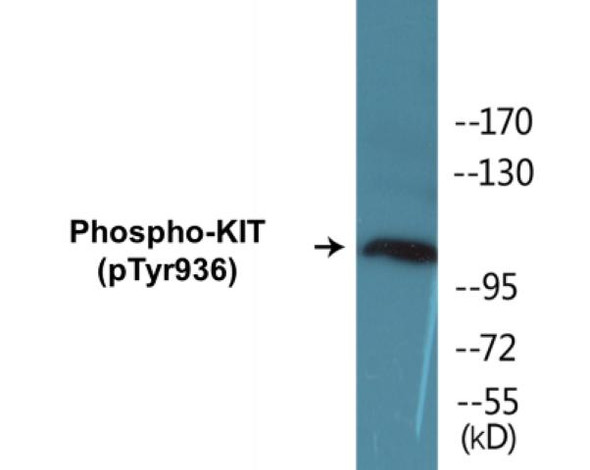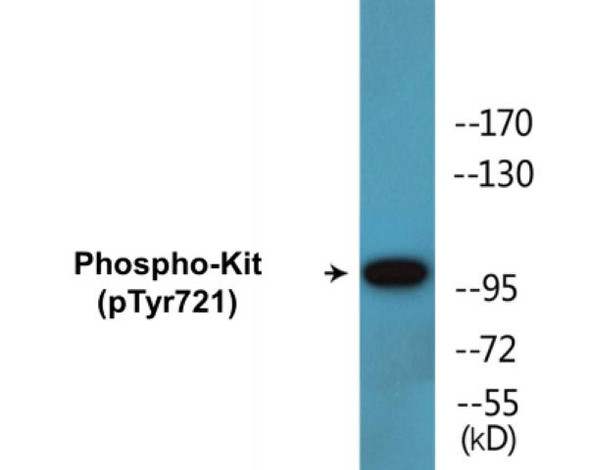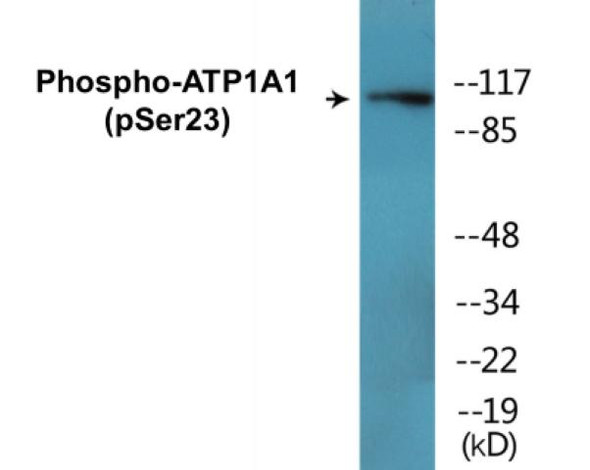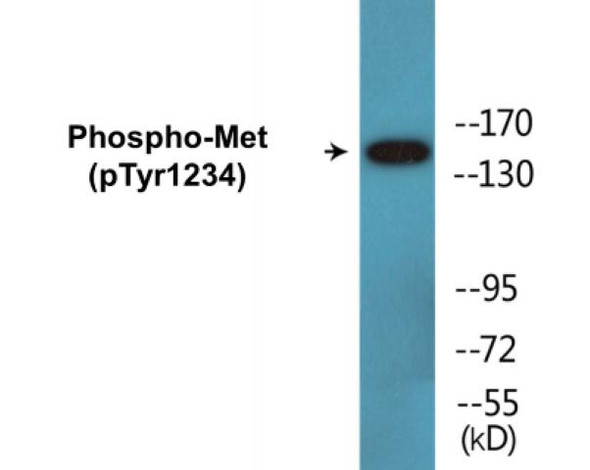Myc (Phospho-Thr58) Colorimetric Cell-Based ELISA Kit
- SKU:
- CBCAB00476
- Product Type:
- ELISA Kit
- ELISA Type:
- Cell Based Phospho Specific
- Research Area:
- Epigenetics and Nuclear Signaling
- Reactivity:
- Human
- Mouse
- Rat
- Detection Method:
- Colorimetric
Description
Myc (Phospho-Thr58)Colorimetric Cell-Based ELISA Kit
The MYC Phospho-Thr58 Colorimetric Cell-Based ELISA Kit is a powerful tool for the quantitative measurement of phosphorylated MYC at threonine 58 in cell lysates. This kit offers high sensitivity and specificity, providing accurate and reliable results for studying the activation of the MYC signaling pathway in various cellular processes.MYC is a transcription factor that plays a critical role in cell growth, proliferation, and survival. Phosphorylation of MYC at threonine 58 has been linked to its oncogenic potential and is implicated in cancer development and progression.
By accurately measuring MYC phosphorylation at this site, researchers can gain valuable insights into the molecular mechanisms underlying cancer and potentially identify new therapeutic targets.The MYC Phospho-Thr58 Colorimetric Cell-Based ELISA Kit is easy to use and compatible with a variety of cell types, making it suitable for a wide range of experimental settings. Whether studying basic cellular biology or investigating potential cancer therapies, this kit is an essential tool for researchers seeking to uncover the role of MYC in disease development and progression.
| Product Name: | Myc (Phospho-Thr58) Colorimetric Cell-Based ELISA |
| Product Code: | CBCAB00476 |
| ELISA Type: | Cell-Based |
| Target: | Myc (Phospho-Thr58) |
| Reactivity: | Human, Mouse, Rat |
| Dynamic Range: | > 5000 Cells |
| Detection Method: | Colorimetric 450 nm |
| Format: | 2 x 96-Well Microplates |
The Myc (Phospho-Thr58) Colorimetric Cell-Based ELISA Kit is a convenient, lysate-free, high throughput and sensitive assay kit that can detect Myc protein phosphorylation and expression profile in cells. The kit can be used for measuring the relative amounts of phosphorylated Myc in cultured cells as well as screening for the effects that various treatments, inhibitors (ie. siRNA or chemicals), or activators have on Myc phosphorylation.
Qualitative determination of Myc (Phospho-Thr58) concentration is achieved by an indirect ELISA format. In essence, Myc (Phospho-Thr58) is captured by Myc (Phospho-Thr58)-specific primary antibodies while the HRP-conjugated secondary antibodies bind the Fc region of the primary antibody. Through this binding, the HRP enzyme conjugated to the secondary antibody can catalyze a colorimetric reaction upon substrate addition. Due to the qualitative nature of the Cell-Based ELISA, multiple normalization methods are needed:
| 1. | A monoclonal antibody specific for human GAPDH is included to serve as an internal positive control in normalizing the target absorbance values. |
| 2. | Following the colorimetric measurement of HRP activity via substrate addition, the Crystal Violet whole-cell staining method may be used to determine cell density. After staining, the results can be analysed by normalizing the absorbance values to cell amounts, by which the plating difference can be adjusted. |
| Database Information: | Gene ID: 4609, UniProt ID: P01106, OMIM: 190080, Unigene: Hs.202453 |
| Gene Symbol: | MYC |
| Sub Type: | Phospho |
| UniProt Protein Function: | Myc: a proto-oncogenic transcription factor that plays a role in cell proliferation, apoptosis and in the development of human tumors. Seems to activate the transcription of growth-related genes. |
| UniProt Protein Details: | Protein type:DNA-binding; Nucleolus; Oncoprotein; Transcription factor Chromosomal Location of Human Ortholog: 8q24.21 Cellular Component: nucleoplasm; protein complex; nucleolus; nucleus; cytosol Molecular Function:protein dimerization activity; protein binding; DNA binding; protein complex binding; transcription factor binding; transcription factor activity Biological Process: oxygen transport; cellular iron ion homeostasis; positive regulation of transcription, DNA-dependent; positive regulation of caspase activity; negative regulation of transcription from RNA polymerase II promoter; Wnt receptor signaling pathway through beta-catenin; chromosome organization and biogenesis; positive regulation of fibroblast proliferation; transforming growth factor beta receptor signaling pathway; positive regulation of cell proliferation; positive regulation of mesenchymal cell proliferation; response to gamma radiation; cell cycle arrest; response to drug; transcription initiation from RNA polymerase II promoter; Notch signaling pathway; regulation of telomere maintenance; transcription, DNA-dependent; MAPKKK cascade; negative regulation of cell division; negative regulation of stress-activated MAPK cascade; negative regulation of monocyte differentiation; chromatin remodeling; ureteric bud branching; regulation of gene expression; negative regulation of fibroblast proliferation; energy reserve metabolic process; gene expression; positive regulation of transcription from RNA polymerase II promoter; response to DNA damage stimulus; positive regulation of epithelial cell proliferation; negative regulation of apoptosis Disease: Burkitt Lymphoma |
| NCBI Summary: | The protein encoded by this gene is a multifunctional, nuclear phosphoprotein that plays a role in cell cycle progression, apoptosis and cellular transformation. It functions as a transcription factor that regulates transcription of specific target genes. Mutations, overexpression, rearrangement and translocation of this gene have been associated with a variety of hematopoietic tumors, leukemias and lymphomas, including Burkitt lymphoma. There is evidence to show that alternative translation initiations from an upstream, in-frame non-AUG (CUG) and a downstream AUG start site result in the production of two isoforms with distinct N-termini. The synthesis of non-AUG initiated protein is suppressed in Burkitt's lymphomas, suggesting its importance in the normal function of this gene. [provided by RefSeq, Jul 2008] |
| UniProt Code: | P01106 |
| NCBI GenInfo Identifier: | 127619 |
| NCBI Gene ID: | 4609 |
| NCBI Accession: | P01106.1 |
| UniProt Secondary Accession: | P01106,P01107, Q14026, A8WFE7, |
| UniProt Related Accession: | P01106 |
| Molecular Weight: | 439 |
| NCBI Full Name: | Myc proto-oncogene protein |
| NCBI Synonym Full Names: | v-myc avian myelocytomatosis viral oncogene homolog |
| NCBI Official Symbol: | MYC |
| NCBI Official Synonym Symbols: | MRTL; MYCC; c-Myc; bHLHe39 |
| NCBI Protein Information: | myc proto-oncogene protein; proto-oncogene c-Myc; transcription factor p64; class E basic helix-loop-helix protein 39; avian myelocytomatosis viral oncogene homolog; v-myc myelocytomatosis viral oncogene homolog; myc-related translation/localization regulatory factor |
| UniProt Protein Name: | Myc proto-oncogene protein |
| UniProt Synonym Protein Names: | Class E basic helix-loop-helix protein 39; bHLHe39; Proto-oncogene c-Myc; Transcription factor p64 |
| Protein Family: | Myc protein |
| UniProt Gene Name: | MYC |
| UniProt Entry Name: | MYC_HUMAN |
| Component | Quantity |
| 96-Well Cell Culture Clear-Bottom Microplate | 2 plates |
| 10X TBS | 24 mL |
| Quenching Buffer | 24 mL |
| Blocking Buffer | 50 mL |
| 15X Wash Buffer | 50 mL |
| Primary Antibody Diluent | 12 mL |
| 100x Anti-Phospho Target Antibody | 60 µL |
| 100x Anti-Target Antibody | 60 µL |
| Anti-GAPDH Antibody | 60 µL |
| HRP-Conjugated Anti-Rabbit IgG Antibody | 12 mL |
| HRP-Conjugated Anti-Mouse IgG Antibody | 12 mL |
| SDS Solution | 12 mL |
| Stop Solution | 24 mL |
| Ready-to-Use Substrate | 12 mL |
| Crystal Violet Solution | 12 mL |
| Adhesive Plate Seals | 2 seals |
The following materials and/or equipment are NOT provided in this kit but are necessary to successfully conduct the experiment:
- Microplate reader able to measure absorbance at 450 nm and/or 595 nm for Crystal Violet Cell Staining (Optional)
- Micropipettes with capability of measuring volumes ranging from 1 µL to 1 ml
- 37% formaldehyde (Sigma Cat# F-8775) or formaldehyde from other sources
- Squirt bottle, manifold dispenser, multichannel pipette reservoir or automated microplate washer
- Graph paper or computer software capable of generating or displaying logarithmic functions
- Absorbent papers or vacuum aspirator
- Test tubes or microfuge tubes capable of storing ≥1 ml
- Poly-L-Lysine (Sigma Cat# P4832 for suspension cells)
- Orbital shaker (optional)
- Deionized or sterile water
*Note: Protocols are specific to each batch/lot. For the correct instructions please follow the protocol included in your kit.
| Step | Procedure |
| 1. | Seed 200 µL of 20,000 adherent cells in culture medium in each well of a 96-well plate. The plates included in the kit are sterile and treated for cell culture. For suspension cells and loosely attached cells, coat the plates with 100 µL of 10 µg/ml Poly-L-Lysine (not included) to each well of a 96-well plate for 30 minutes at 37°C prior to adding cells. |
| 2. | Incubate the cells for overnight at 37°C, 5% CO2. |
| 3. | Treat the cells as desired. |
| 4. | Remove the cell culture medium and rinse with 200 µL of 1x TBS, twice. |
| 5. | Fix the cells by incubating with 100 µL of Fixing Solution for 20 minutes at room temperature. The 4% formaldehyde is used for adherent cells and 8% formaldehyde is used for suspension cells and loosely attached cells. |
| 6. | Remove the Fixing Solution and wash the plate 3 times with 200 µL 1x Wash Buffer for five minutes each time with gentle shaking on the orbital shaker. The plate can be stored at 4°C for a week. |
| 7. | Add 100 µL of Quenching Buffer and incubate for 20 minutes at room temperature. |
| 8. | Wash the plate 3 times with 1x Wash Buffer for 5 minutes each time. |
| 9. | Add 200 µL of Blocking Buffer and incubate for 1 hour at room temperature. |
| 10. | Wash 3 times with 200 µL of 1x Wash Buffer for 5 minutes each time. |
| 11. | Add 50 µL of 1x primary antibodies Anti-Myc (Phospho-Thr58) Antibody, Anti-Myc Antibody and/or Anti-GAPDH Antibody) to the corresponding wells, cover with Parafilm and incubate for 16 hours (overnight) at 4°C. If the target expression is known to be high, incubate for 2 hours at room temperature. |
| 12. | Wash 3 times with 200 µL of 1x Wash Buffer for 5 minutes each time. |
| 13. | Add 50 µL of 1x secondary antibodies (HRP-Conjugated AntiRabbit IgG Antibody or HRP-Conjugated Anti-Mouse IgG Antibody) to corresponding wells and incubate for 1.5 hours at room temperature. |
| 14. | Wash 3 times with 200 µL of 1x Wash Buffer for 5 minutes each time. |
| 15. | Add 50 µL of Ready-to-Use Substrate to each well and incubate for 30 minutes at room temperature in the dark. |
| 16. | Add 50 µL of Stop Solution to each well and read OD at 450 nm immediately using the microplate reader. |
(Additional Crystal Violet staining may be performed if desired – details of this may be found in the kit technical manual.)










